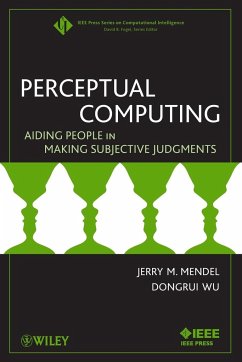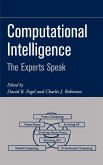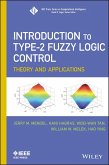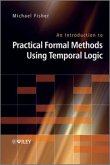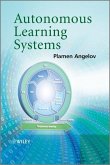Lotfi Zadeh, the father of fuzzy logic, coined the phrase computing with words (CWW) to describe a methodology in which the computation objects are words drawn from a natural language. This text explains how to implement CWW for making subjective judgments using the three components of a Perceptual Computer (encoder, CWW engines, and decoder) and then providing detailed applications. The coverage divides the content into application chapters and detail chapters, including brief summaries of detail chapters for readers more interested in applications. This is an important go-to for researchers and students in AI, fuzzy logic, computer science in general, and psychology.
Explains for the first time how "computing with words" can aid in making subjective judgments
Lotfi Zadeh, the father of fuzzy logic, coined the phrase "computing with words" (CWW) to describe a methodology in which the objects of computation are words and propositions drawn from a natural language. Perceptual Computing explains how to implement CWW to aid in the important area of making subjective judgments, using a methodology that leads to an interactive device--a "Perceptual Computer"--that propagates random and linguistic uncertainties into the subjective judgment in a way that can be modeled and observed by the judgment maker.
This book focuses on the three components of a Perceptual Computer--encoder, CWW engines, and decoder--and then provides detailed applications for each. It uses interval type-2 fuzzy sets (IT2 FSs) and fuzzy logic as the mathematical vehicle for perceptual computing, because such fuzzy sets can model first-order linguistic uncertainties whereas the usual kind of fuzzy sets cannot. Drawing upon the work on subjective judgments that Jerry Mendel and his students completed over the past decade, Perceptual Computing shows readers how to:
Map word-data with its inherent uncertainties into an IT2 FS that captures these uncertainties
Use uncertainty measures to quantify linguistic uncertainties
Compare IT2 FSs by using similarity and rank
Compute the subsethood of one IT2 FS in another such set
Aggregate disparate data, ranging from numbers to uniformly weighted intervals to nonuniformly weighted intervals to words
Aggregate multiple-fired IF-THEN rules so that the integrity of word IT2 FS models is preserved
Free MATLAB-based software is also available online so readers can apply the methodology of perceptual computing immediately, and even try to improve upon it. Perceptual Computing is an important go-to for researchers and students in the fields of artificial intelligence and fuzzy logic, as well as for operations researchers, decision makers, psychologists, computer scientists, and computational intelligence experts.
Explains for the first time how "computing with words" can aid in making subjective judgments
Lotfi Zadeh, the father of fuzzy logic, coined the phrase "computing with words" (CWW) to describe a methodology in which the objects of computation are words and propositions drawn from a natural language. Perceptual Computing explains how to implement CWW to aid in the important area of making subjective judgments, using a methodology that leads to an interactive device--a "Perceptual Computer"--that propagates random and linguistic uncertainties into the subjective judgment in a way that can be modeled and observed by the judgment maker.
This book focuses on the three components of a Perceptual Computer--encoder, CWW engines, and decoder--and then provides detailed applications for each. It uses interval type-2 fuzzy sets (IT2 FSs) and fuzzy logic as the mathematical vehicle for perceptual computing, because such fuzzy sets can model first-order linguistic uncertainties whereas the usual kind of fuzzy sets cannot. Drawing upon the work on subjective judgments that Jerry Mendel and his students completed over the past decade, Perceptual Computing shows readers how to:
Map word-data with its inherent uncertainties into an IT2 FS that captures these uncertainties
Use uncertainty measures to quantify linguistic uncertainties
Compare IT2 FSs by using similarity and rank
Compute the subsethood of one IT2 FS in another such set
Aggregate disparate data, ranging from numbers to uniformly weighted intervals to nonuniformly weighted intervals to words
Aggregate multiple-fired IF-THEN rules so that the integrity of word IT2 FS models is preserved
Free MATLAB-based software is also available online so readers can apply the methodology of perceptual computing immediately, and even try to improve upon it. Perceptual Computing is an important go-to for researchers and students in the fields of artificial intelligence and fuzzy logic, as well as for operations researchers, decision makers, psychologists, computer scientists, and computational intelligence experts.

